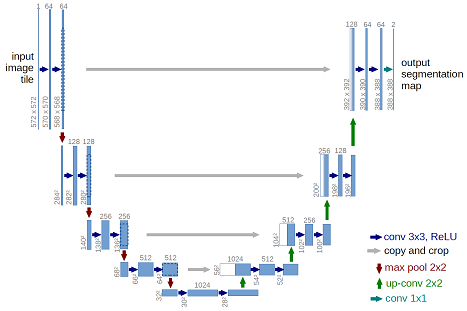The Kaggler is an organization that conducts competitions on predictive modelling and analytics. The Kagglers were once challenged to segment nerve structures from ultrasound images of the neck. The data regarding the same can be downloaded from https://www.kaggle.com/c/ultrasound-nerve-segmentation. The UNET model proposed by Ronneberger et al. (https://arxiv.org/pdf/1505.04597.pdf) resembles an autoencoder but with convolutions instead of a fully connected layer. There is an encoding part with the convolution of decreasing dimensions and a decoder part with increasing dimensions as shown here:

Figure illustrating the architecture of the UNET model [Reproduced with permission from Ronneberger et al.]
The convolutions of the similar sized encoder and decoder part are learning by skip connections. The output of the model is a mask that ranges between 0 and 1. Let's start by importing the functions, with the help of the following code:
import os from skimage.transform...



